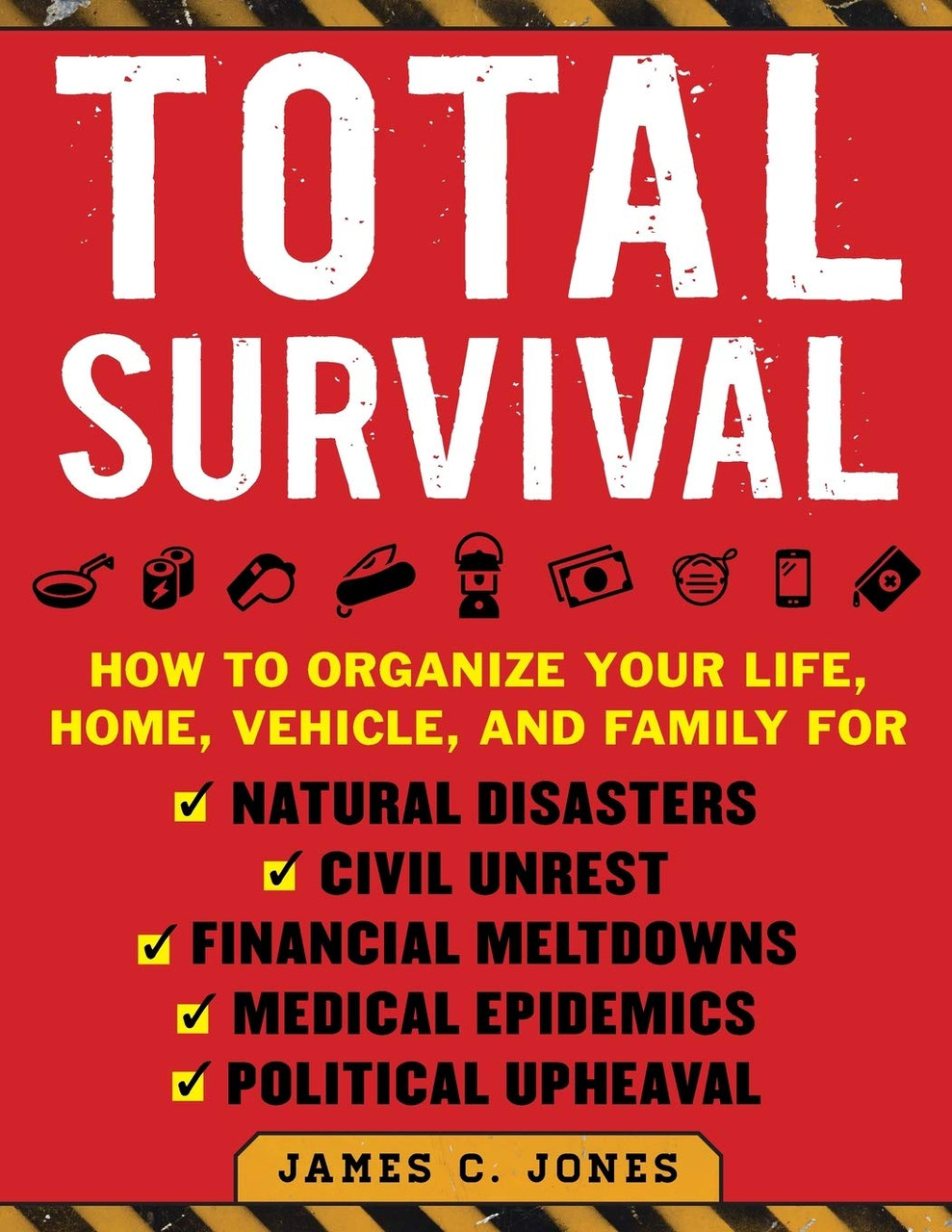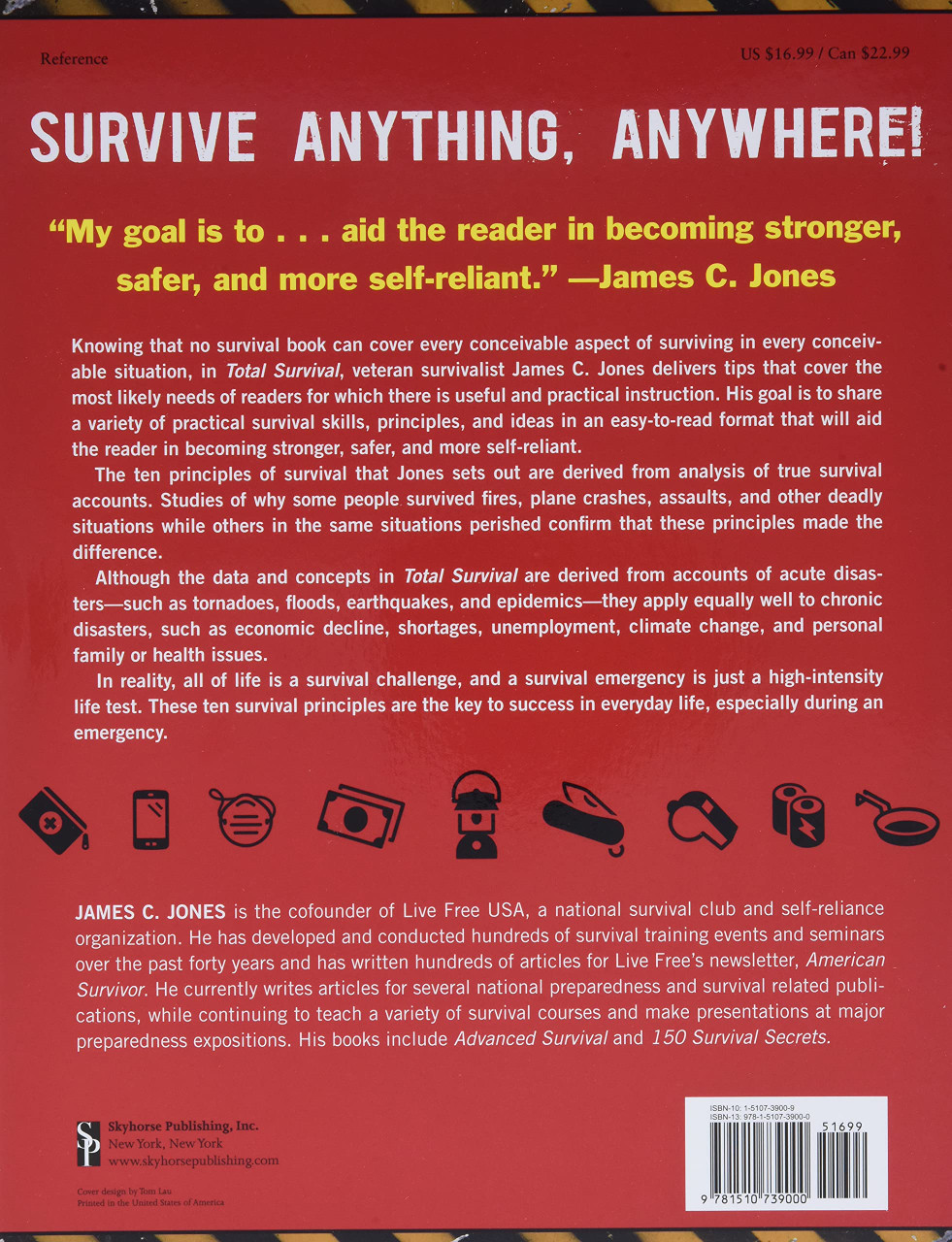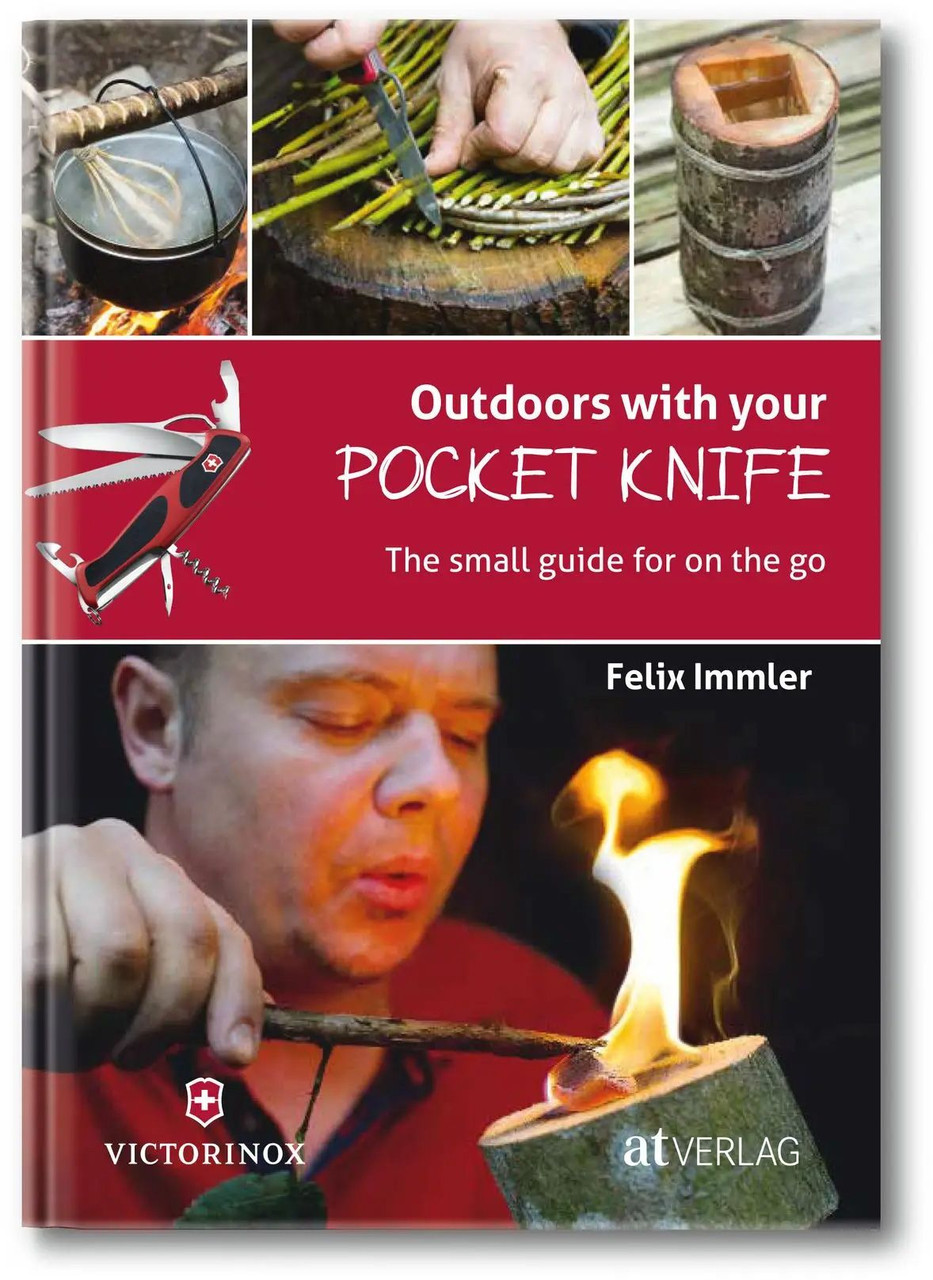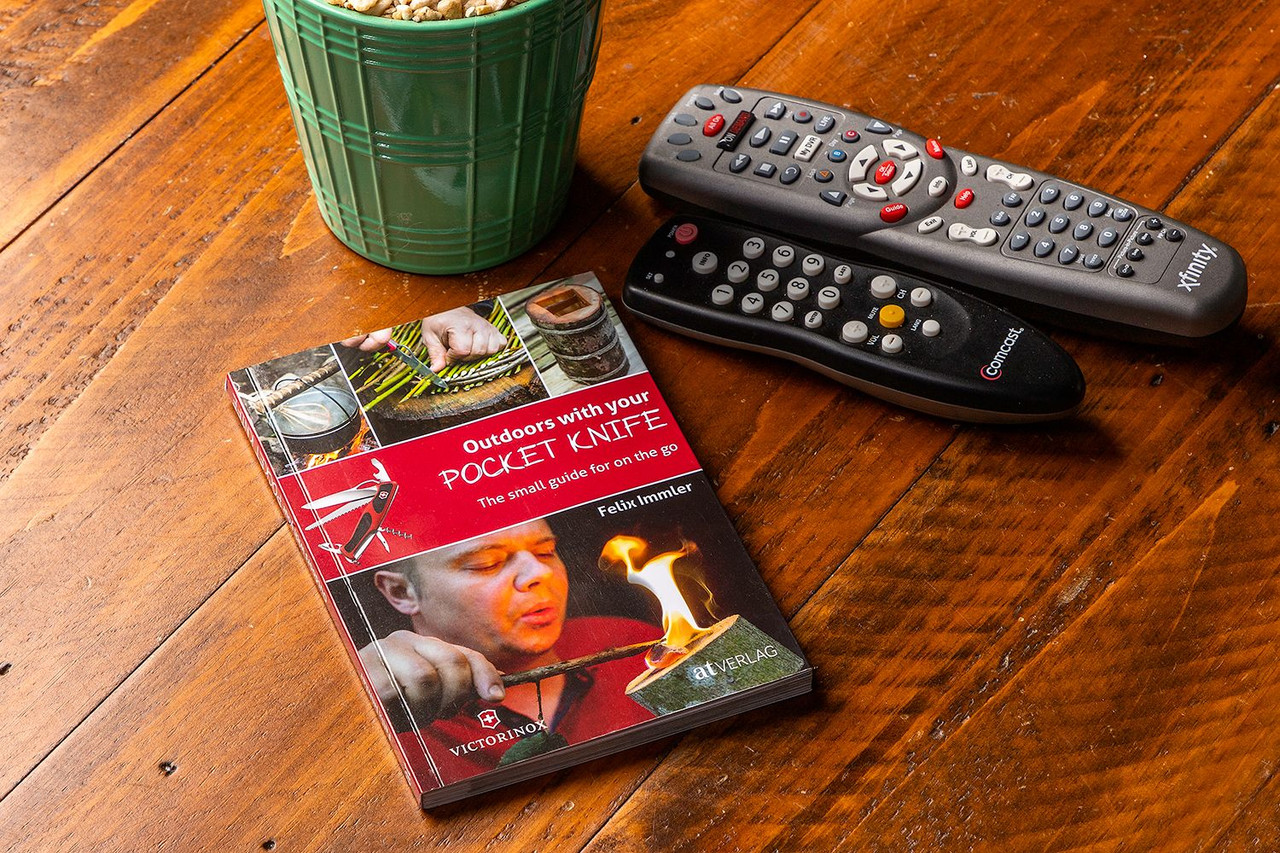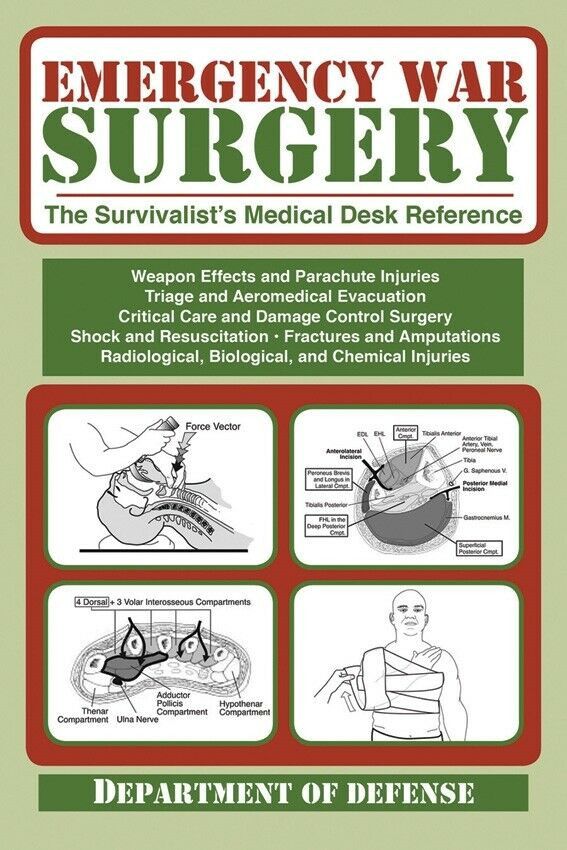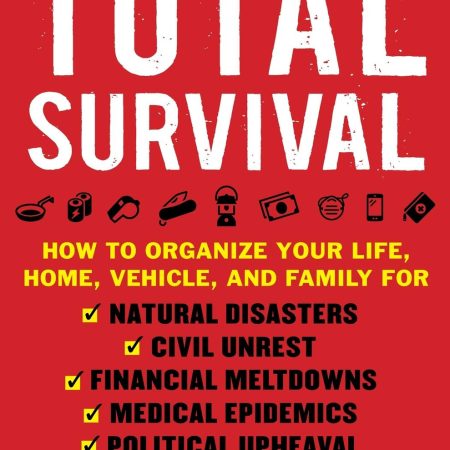| Content | In Total Survival, veteran survivalist James C. Jones delivers tips that cover the most likely needs of readers and for which there is useful and practical instruction. His goal is to share a variety of practical survival skills, principles, and ideas in an easy-to read format that will aid the reader in becoming stronger, safer, and more self-reliant.
The ten principles of survival that Jones sets out are derived from analysis of true survival accounts. Studies of why some people survived fires, plane crashes, assaults, and other deadly situations while others in the same situations perished confirm that these principles made the difference. His table of contents includes:
- 1: Ten Principles of Survival (including Anticipate and Stay Calm)
- 2: Ten Disasters to Prepare For (including Home Fire While Asleep and Home Invasion by Intruder).
- 3: Ten Items for the Prepared Home (including Emergency Plans and Packs)
- 4: Ten Items You Should Always Carry (including a Miniature LED flashlight and a Whistle)
- 5: Ten Things You Should Have in Your Survival Pack(s) (including Water and Weapons)
- 6: Ten Ways to Avoid and Survive Street Crime (including Carjacking and Active Shooter)
- 7: Ten Self-Defense Moves You Should Know (including Front Choke Counter and Handgun Defenses)
- 8: Ten Medical Skills You Should Know (including Cardiac Arrest and Shock)
- 9: Ten Ways to Gather and Purify Water (including Boiling Water and Distillation)
- 10: Ten Ways to Gather and Store Food (including Foraging and Trapping)
- 11: Ten Ways to Start and Maintain a Fire (including Fire by Flit and Steel and Fire by Solar Heat
- 12: Ten Shelters You Should Know How to Build (including Fallout Shelters and Snow Shelters)
- 13: Terrorism
Although the data and concepts in Total Survival are derived from accounts of acute disasters—such as tornadoes, floods, earthquakes, and epidemics—they apply equally well to chronic disasters, such as economic decline, shortages, unemployment, climate change, and personal family or health issues.
In reality, all of life is a survival challenge, and a survival emergency is just a high-intensity life test. These ten survival principles are the key to success in everyday life, especially during an emergency.
| In the chaos of a survival situation, firearms will be important tools for protecting yourself, your family, and your supplies as well as for hunting animals for food. In A Prepper’s Guide to Shotguns, Robert K. Campbell discusses the best shotguns to have with you in any confrontation—including the end of the world as we know it. Shotguns that are easy to carry and lightweight and that shoot accurately and reliably at close ranges are ideal candidates for personal protection. In A Prepper’s Guide to Shotguns, Campbell explores specific shotguns that are appropriate for urban, rural, and suburban environments, with tips on how to use them in each context. Whether at home or in a survival scenario, these shotguns are the best for defense. A Prepper’s Guide to Shotguns not only reviews the specific features of defensive shotguns but how to use them—whether on the move, in a defensive situation, while retreating, or in other circumstances. Campbell also offers expert tips on how to improve your marksmanship, how to maintain your firearms, crucial gun safety rules, what ammo and optics to purchase, and more. | With a Swiss Army Knife in your pocket and a copy of "Outdoors with Your Pocket Knife" in your pack, you have everything you need to create a fun, safe, and adventurous wilderness camp. This compact, comprehensive guide shows you how to develop your outdoor skills with simple, clear instructions. From ideas on how to use natural materials to carve cutlery and bowls, to tips on weaving your own plates, this is the ultimate manual for self-sufficiency and survival skills. It even offers suggestions for cooking over a fire, featuring ingenious recipes like chicken roasted on a water-operated grill skewer. With engaging activities for all ages, essential safety rules, and knife application techniques, everyone who is wild at heart should have a copy of this book.
| Anyone who wants to improve his or her health in a completely natural way will find this book to be an absolute must-have for his or her home—and garden.
| Essential Skills to Survive Any Crisis You're a backpacker or a hunter lost in the woods after sundown; what do you do? Your car flips over on an empty highway; how will you survive until morning? If you were left alone in the middle of the wilderness, would you be able to make it? While current technology, such as cell phones and GPS, is helpful, when you are lost in the wilderness the best things you can rely on are your own skills. Badass Survival Secrets will introduce you to everything that you need to survive when the unexpected happens. In this book you'll learn basic survival skills such as:- How to build a fire- How to find clean water- How to find food that is safe to eat- How to build a shelter- Basic navigation From the forest, to the tundra, and everywhere in between, Badass Survival Secrets contains all that you need to become a badass survivalist expert. Specifications:- Number of Pages: 128- Size: 6" x 9"- Type: Softcover. | 21 Essential Knots for Everyday Use Indoors or Outdoors! This compact little reference book includes knots for a wide range of functions, from home to work, hobby to play activities. No knot-tying jargon is used, no baffling technical terms--just simple step-by-step instructions and outstandingly clear line drawings. It's the perfectly portable knot reference for anyone--scouts, sailors, hunters, anglers, gardeners, farmers, horse riders, you name it! Among the knots in this book are: Overhand knot, Heaving line knot Reef knot, Sheetbend Fisherman's knot, Figure-of-eight loop, Bowline Three-part crown, Sheepshank Half-hitch, Clove hitch, Constrictor knot, Pile hitch, Highwayman's hitch, Waggoner's hitch, Timber hitch, Double-loop knot, Uni-knot, Blood knot, Square lashing, and more! Start learning these useful and practical knots today.
|
